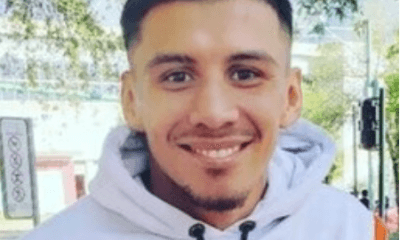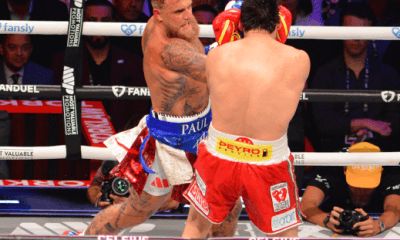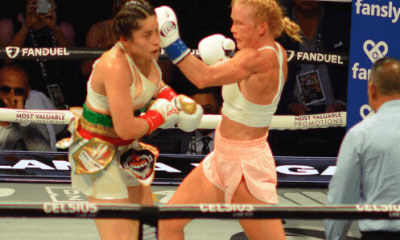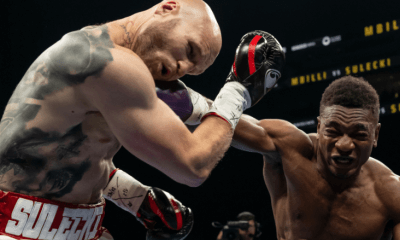Featured Articles
In Oleksandr Gvozdyk, Teddy Atlas Finds One More Fighter He Can Trust and Love
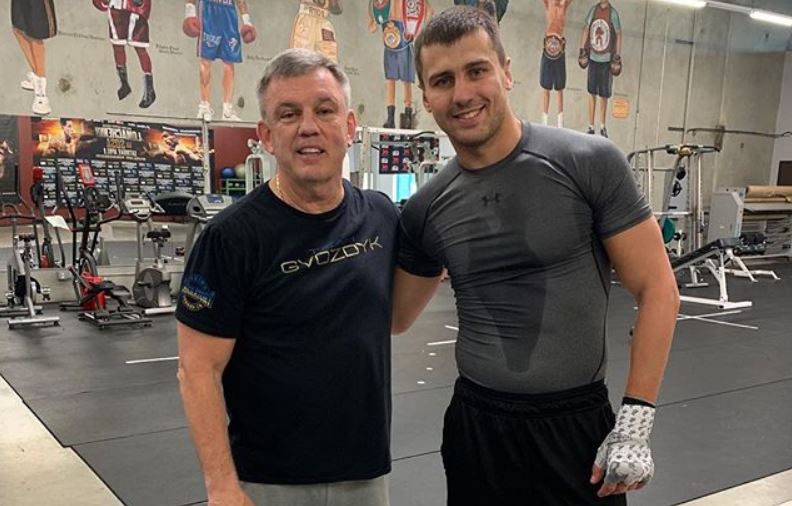
Teddy Atlas was so very young, just 19, when his mentor, Cus D’Amato, recognized his special gift for comprehending the many nuances of the sport they both loved, and imparting that knowledge to others. The “young master,” D’Amato dubbed Atlas, and the wise-beyond-his-years kid from Staten Island, N.Y., whose own boxing career had been sidetracked by a back injury, soaked up D’Amato’s dictums as if he were a sponge. He trusted Cus implicitly and if the old master, who was 77 when he died on Nov. 4, 1985, instructed him to do something, he did it. Every time.
Well, almost every time.
“I never wanted to love a fighter. It’s a cardinal sin. Cus told me you’re not supposed to do that,” Atlas, 62, recalled of the sole D’Amato rule that never quite took root with him. But not every human being, including boxing trainers, is wired the same, and thus an intractable rule for one might not be the right thing for someone else.
Atlas, forever a Cus disciple in so many ways, has been burned more than a few times by fighters who initially pledged their undying fealty but later chafed at the conditions he had insisted upon at the outset of their association. Love and trust are wonderful things in any personal or professional relationship, but only if it’s a two-way street. When it isn’t, breakups are inevitable and usually painful. Teddy’s pugilistic divorces from, among others, Donny Lalonde, Shannon Briggs, Michael Moorer and Alexander Povetkin – champions all – left scars upon his psyche as deep and distinctive as the one down the left side of his face, which required 400 stitches (200 inside, 200 outside) to close and was inflicted long ago by a knife-wielding opponent in a street fight.
“I look back sometimes and I wonder how the hell did I do this with so many fighters, going back more than 40 years, and still be whole,” Atlas recalled of a career that will gain him induction into the International Boxing Hall of Fame on June 9 – but as a commentator for television, not as a trainer, which he has always considered himself to be first and foremost.
“But I’m not completely whole,” he pointed out. “You do lose bits and pieces of yourself, and maybe that’s why you hesitate before you do it again.”
After the retirement of former super lightweight and welterweight titlist Timothy Bradley Jr., a fighter loved and trusted by Atlas to a degree he thought might be beyond duplication, the recalcitrant trainer was even more reluctant to believe he could expose himself to the possibility of having more jagged bits and pieces of his inner self cut away. Oh, the offers still came pouring in, from talented fighters and their managers, many of whom might be prepared to talk a good game when it came to the nitty-gritty of committing to always doing things the Atlas way. And for any potential pupil – Atlas sees his role as that of an intense but caring teacher — going part or even most of the way was never going to be sufficient for someone who demands 100 percent, of himself as well as of his fighter.
“I’m afraid,” Atlas said of his apprehension of again plunging into a part of his life that could be, at alternate turns, exhilarating or depressing. “I don’t mind saying that. Some people say fear is a forbidden word, a taboo word, because it shows vulnerability. But we’re all vulnerable, I think, whether we show it or tell it. I’m strong when I have to be, but part of being strong is knowing that you can be hurt. It’s just being honest with yourself.”
But Atlas’ children, Nicole and Teddy III, knew their father well enough to recognize that his being semi-idle and unfulfilled was as bad or worse than risking more disappointment. Teddy Atlas’ destiny was made clear to him at an early age, and what he needed, maybe more than he realized, was another opportunity, albeit just the right one, to again do what he was meant to do.
So Atlas will again be the chief second for WBC light heavyweight champion Oleksandr Gvozdyk (16-0, 13 KOs) of the Ukraine when he defends his title against Doudou Ngumbu (38-8, 14 KOs), of France by way of his native Congo, in the ESPN-televised main event Saturday night at the 2300 Arena in South Philadelphia. It will be just the second fight together for Gvozdyk and Atlas, the first being Gvozdyk’s dethronement of long-reigning WBC champ Adonis Stevenson, via 11th-round knockout, on Dec. 1, 2018, in Quebec City, Canada. It might be said that Atlas and Gvozdyk, 31, are still in the honeymoon phase of their relationship, but Nicole Atlas thinks this is a union that benefits both parties and has a chance to go the distance.
“My dad has had a lot of fighters, and his share of great ones,” said Nicole, an attorney whose childhood and adolescence were so immersed in her father’s occupation that she came to think of the men he trained almost as surrogate brothers. “We spent many holidays with the fighters and their families.
“You know, it’s kind of funny. In the twilight of his career – I guess it’s never too late – he finds Alex (Gvozdyk), who is the perfect fighter for him. Not everyone has the personality and makeup to be trained by my dad. He likes to control every aspect of training camp and, because he puts everything he has into it, he expects no less from his fighters. And Alex does that. That’s part of what makes their relationship work. It’s still early on, but you can see that there’s a special chemistry between them.”
Gvozdyk said that special chemistry was not instantaneous. The first contact with Atlas was made by Gvozdyk’s manager, Egis Klimas, who invited Atlas to fly out to Oxnard, Calif., where Gvozdyk now resides, for a get-together to determine if fighter and would-be trainer might prove a good fit.
“It was difficult at first, because I was two months before the biggest fight of my life,” Gvozdyk recalled. “When Teddy came for a weekend he never told me whether he was going to train me or not. I couldn’t understand why. But we talked a lot. I introduced him to my family. I think he wanted to find out what kind of person I am. I waited two weeks before he made his decision.
“I am so glad he trusts me and agreed to train me. People need to be important not only for themselves, but for somebody else. Teddy makes me a better fighter. But I think I help him in some ways, too. It is important to him to be a trainer, to have someone to teach. This is what he does best. He was born to teach boxing. He is still a pretty young person at 62. This is not a time for him to retire. If he can do this and enjoy it, staying involved in boxing is really the only right decision for him.”
Interestingly, it is Nicole and Teddy III, who is the head of scouting for the NFL’s Oakland Raiders, who urged their father to fly to California to determine whether he and Gvozdyk might be compatible on a personal as well as a professional level. It’s not the first time that Atlas’ children had nudged him back into a sometimes-harsh game, having done so previously with Bradley.
“My children are smarter than me,” Atlas said. “I’m very blessed by what kind of people they are, how caring they are, how intuitive they are. They both told me that Alex was the perfect fighter for me. I would not have gotten involved again if that hadn’t been the case. I was inclined to say no; I’d had enough. I’d lost trust in the business of the game, for different reasons. When Egis called me and asked if I would consider training Alex, my initial thought was to stay out.
“But then my children reminded me of how I had told them about the privilege I had had to be a trainer and a teacher. They said I had a gift and the privilege to do that and, like all gifts, it doesn’t last forever. Yes, it is a job and it can be a heavy responsibility, but it’s also a privilege. I could still help someone to improve.
“So who knows? Maybe I’m being given another opportunity to do what I was put on this earth to do.”
It might be the last such opportunity and privilege. Unlike some other trainers who already are or eventually will be enshrined in the IBHOF, Atlas is selective. He cannot fathom how other trainers can work with 10 or 12 fighters, parceling snippets of their time to each instead of going all-in with just one.
“I know this (his involvement with Gvozdyk) could lead to something special,” Atlas said. “I get that. But I also know that it can lead to something I don’t want it to lead to, and I know what it can take out of me.
“Right now there’s only one fighter I could even think about training, and it’s the one I am training. I can only do this for a special person, and this kid is a special person.”
Bernard Fernandez is the retired boxing writer for the Philadelphia Daily News. He is a five-term former president of the Boxing Writers Association of America, an inductee into the Pennsylvania, New Jersey and Atlantic City Boxing Halls of Fame and the recipient of the Nat Fleischer Award for Excellence in Boxing Journalism and the Barney Nagler Award for Long and Meritorious Service to Boxing.
Check out more boxing news on video at The Boxing Channel
To comment on this story in The Fight Forum CLICK HERE
-
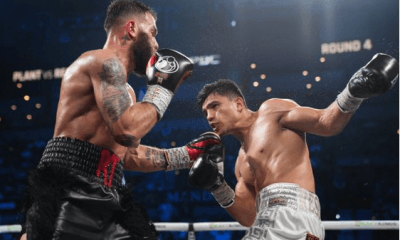
 Featured Articles4 weeks ago
Featured Articles4 weeks agoA Night of Mismatches Turns Topsy-Turvy at Mandalay Bay; Resendiz Shocks Plant
-

 Featured Articles2 weeks ago
Featured Articles2 weeks agoAvila Perspective, Chap. 330: Matchroom in New York plus the Latest on Canelo-Crawford
-

 Featured Articles1 week ago
Featured Articles1 week agoVito Mielnicki Jr Whitewashes Kamil Gardzielik Before the Home Folks in Newark
-
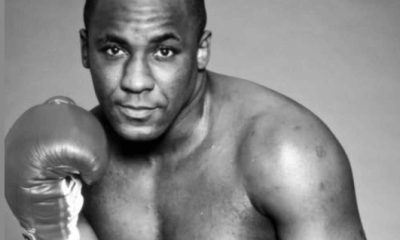
 Featured Articles4 weeks ago
Featured Articles4 weeks agoRemembering the Under-Appreciated “Body Snatcher” Mike McCallum, a Consummate Pro
-

 Featured Articles4 weeks ago
Featured Articles4 weeks agoAvila Perspective, Chap 329: Pacquiao is Back, Fabio in England and More
-

 Featured Articles3 weeks ago
Featured Articles3 weeks agoOpetaia and Nakatani Crush Overmatched Foes, Capping Off a Wild Boxing Weekend
-

 Featured Articles3 weeks ago
Featured Articles3 weeks agoFabio Wardley Comes from Behind to KO Justis Huni
-

 Featured Articles2 weeks ago
Featured Articles2 weeks agoCatching Up with Clay Moyle Who Talks About His Massive Collection of Boxing Books

